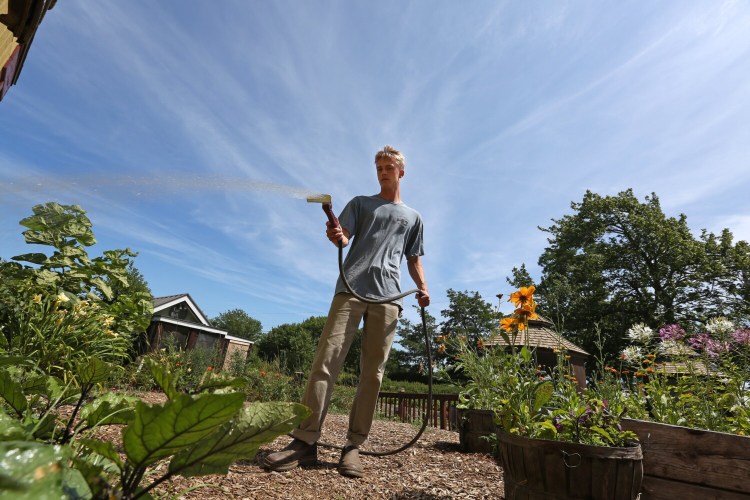As the dog days of summer linger and climate change heats up the planet, a drought continues for much of Maine. Rain in July was significantly below average, and the forecast is calling for hot and dry conditions to continue.
There’s been some improvement compared to two weeks ago when more of the state was covered by drought conditions, but not nearly enough, National Weather Service meteorologist Stephen Baron of the Gray station said Sunday.
Most of southern and coastal Maine remains in a moderate drought, while much of the country has widespread drought conditions, according to the U.S. Drought Monitor map.

In Portland, rainfall measured 1.28 inches in July, compared to the average of 3.4 inches, said meteorologist Jon Palmer. Rain was also well below average in May (1.12 inches compared to 3.67) and June (2.62 inches compared to 4.14).
The lack of snowpack this winter, when Portland only saw 44.1 inches of snow compared to 65.4 inches on average, has also been a factor.
The Drought Monitor map, which is updated on Thursdays and does not include rain that fell last Thursday, shows six Maine counties classified entirely as moderate drought: York, Cumberland, Lincoln, Knox, Sagadahoc and Waldo.
Eight counties have areas with both moderate drought and abnormally dry conditions: Androscoggin, Oxford, Franklin, Kennebec, Penobscot, Piscataquis, Hancock and Somerset. Washington County is now categorized only as abnormally dry. Aroostook is the only county without drought or dry conditions.
Thunderstorms did deliver up to four inches of rain in Oxford, Franklin and Somerset counties on Thursday, with lesser amounts toward the coast, but “unfortunately that doesn’t do much for a drought,” Baron said. “And most of these storms are quick hitting.”
What’s needed, Baron said, is a widespread, long, soaking rain.
But that weather is not coming soon.
The first week of August calls for more heat. “We have quite a stretch at the end of the week. It’s going to be similar to the heat wave we just had,” Baron said. “Thursday will be the hottest,” with the high temperature expected to go into the 90s, he said.
When looking at the projected heat index, which factors in humidity, it will likely feel even hotter. Coastal New Hampshire is expected to see heat indexes of 100 degrees or more.
For farms with irrigation, the hot, dry weather is delivering an earlier than normal corn crop.
“The weather has pushed corn faster, our corn is ready now,” said Justin Gray, produce manager at Pineland Farms in New Gloucester.
“Our farms and other farms will be moving a lot of sweet corn available this week. When we get a bunch of heat, it piles up. We have a lot of sweet corn.” The corn is big and beautiful, he said.
Getting water to crops does mean more labor and expense though, he said, which also leads to higher prices for consumers, “but not sticker shock.”
Aggressive watering has helped Pineland with its strawberries, cucumbers, zucchini and summer squash, but Gray said farms without irrigation will likely suffer and lose some crops.
Send questions/comments to the editors.




Comments are no longer available on this story